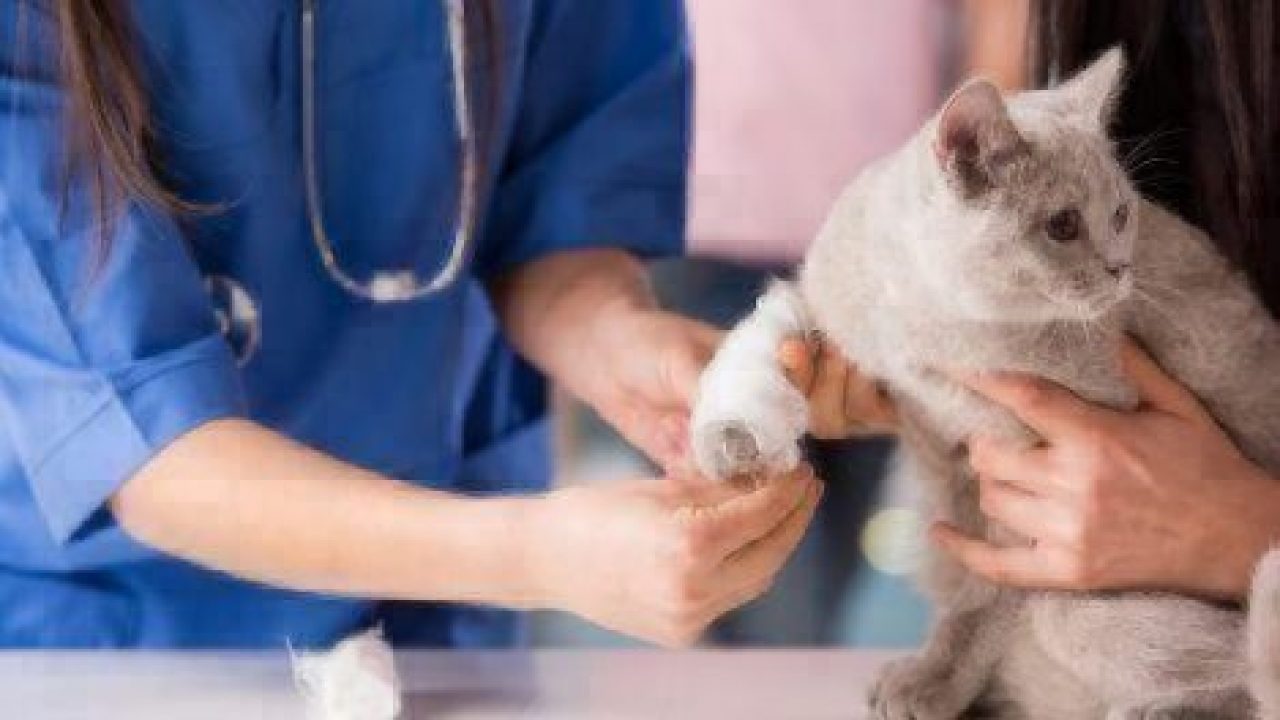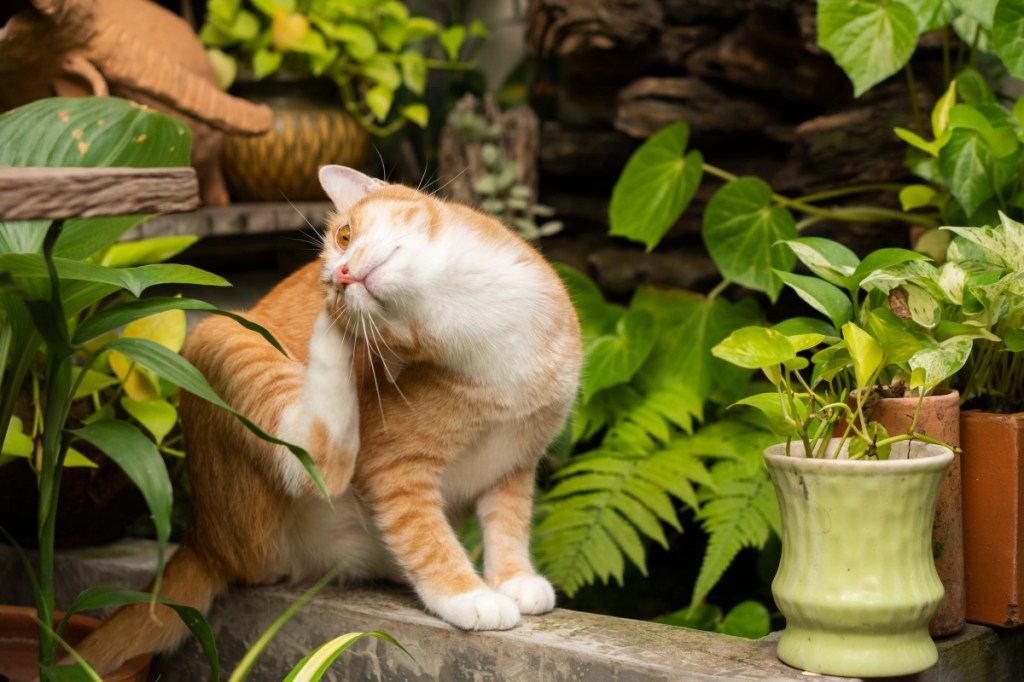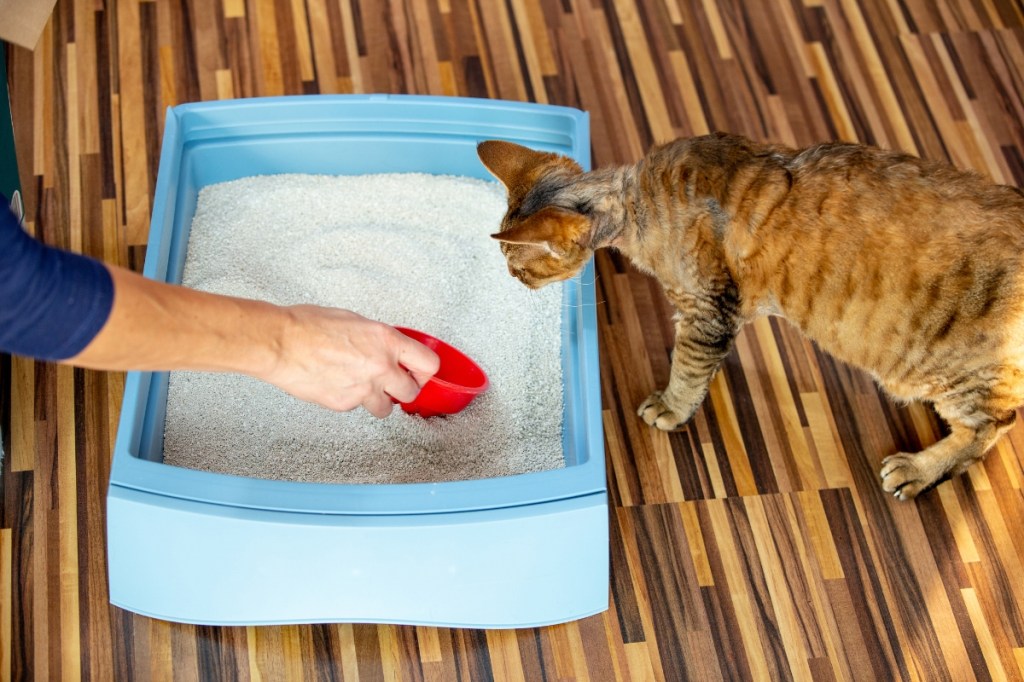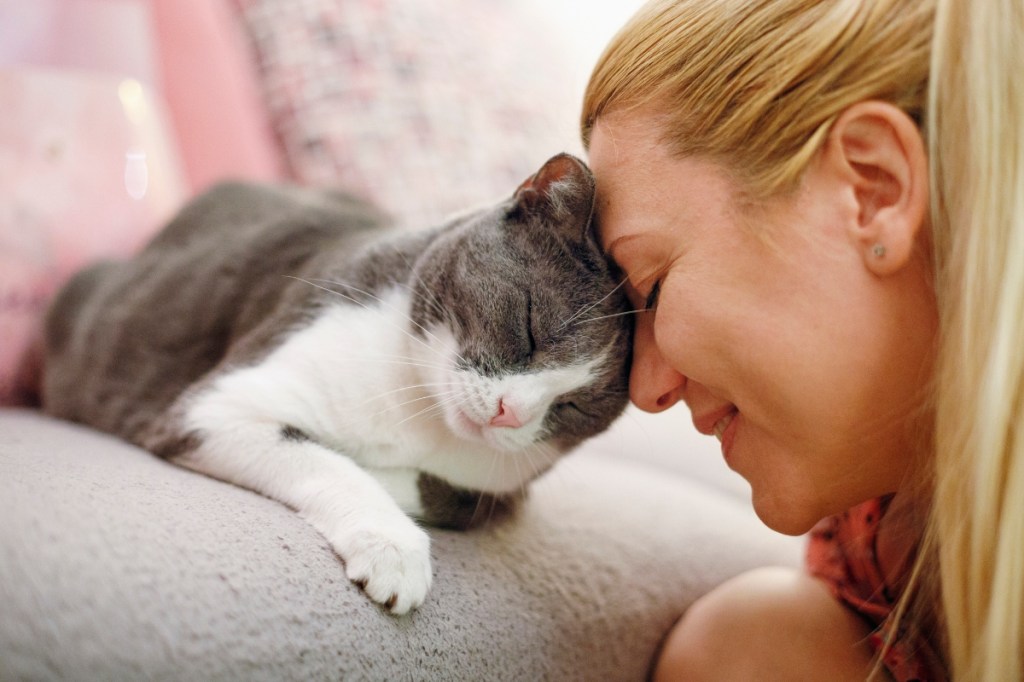Key Takeaways
- FeLV is a retrovirus that affects a cat’s DNA.
- It spreads through infected saliva, urine, feces, mucous, and bite wounds.
- Symptoms of FeLV include loss of appetite, poor coat condition, and persistent fever.
- Vets use blood tests to diagnose FeLV and determine the disease’s stage.
- FeLV has no cure, but vets can treat its symptoms, including infection and anemia.
Table of Contents
Feline leukemia virus (FeLV) is a retrovirus (meaning it affects the DNA) that infects cats. FeLV can be transmitted through infected cat saliva, urine, feces, bite wounds, milk or nasal secretions. Kittens are much more susceptible to FeLV infection than adult cats are, and therefore are at the greatest risk of infection if exposed. Transmission can take place from an infected mother cat to her kittens, either before they are born or while they are nursing.
Even healthy adult cats can become infected if sufficiently exposed to infected cats. If the virus is not eliminated by the cat’s immune system upon exposure, the virus can cause diseases such as lymphoma.
Signs and symptoms of feline leukemia
The signs of infection with FeLV include:
- Loss of appetite and progressive weight loss
- Poor coat condition
- Swollen or enlarged lymph nodes
- Persistent fever
- Pale gums and other mucus membranes
- Inflammation of the gums (gingivitis) and mouth (stomatitis)
- Infections of the skin, urinary bladder, and upper respiratory tract
- Persistent diarrhea
- Anemia and pancytopenia (reduction in red and white blood cells and platelets)
- Jaundice
- Seizures, behavior changes, and other neurological disorders
- A variety of eye conditions including uneven pupils
- Abortion of kittens or other reproductive failures
- Recurring bacterial and viral illnesses
During the early stages of infection, it is common for cats to exhibit no signs of disease and asymptomatic carriers will show no sign of the disease at all. Over time, an infected cat will begin to show poor health consistent with repeated cycles of illness.
Diagnosis and effects of the disease
There are two types of blood tests that vets use to diagnose FeLV: one is a screening tool that detects a specific protein and the other is an antibody test to confirm FeLV infection and stage of the disease.
While a cat’s immune system can fight off the infection and gain immunity at the cost of being a carrier, other cats who become fully infected can expect the following trajectory:
- Stage One: The virus enters the cat and begins to replicate.
- Stage Two: This replication then enters the blood stream and spreads throughout the body.
- Stage Three: The lymphoid system (which produces antibodies to attack infected cells) becomes infected.
- Stage Four: During this stage, the hemolymphatic system and intestines become infected. This is the main point of infection where the virus can take over the cat’s immune system; if the cat does not fight off the virus, it progresses to Stage Five.
- Stage Five: The virus replicates and the bone marrow becomes infected. By now, the virus will live within the cat for the rest of its life.
- Stage Six: The cat’s body is overwhelmed by infection and complications will arise, including the possibility of cancers like lymphoma or fibrosarcoma (bone cancer).
Treatment and prevention for FeLV
Unfortunately, there is currently no definitive cure for FeLV. Veterinarians treating and managing FeLV-positive cats treat specific problems; for example, antibiotics are used for bacterial infections or blood transfusions for severe anemia.
Vaccines for FeLV are available, though no vaccine offers 100% protection from the virus. The only sure way to protect cats from FeLV is to prevent exposure. Keeping cats indoors, away from potentially infected cats is recommended, and any newly adopted kittens and cats should be tested for the virus. Reducing the risk is your best safety net. However, scientists have reported that about 70% of cats exposed to or encountering the virus are able to resist infection, eliminating the virus of their own accord.
Although a diagnosis of FeLV can be devastating not just for the pet parent but also for the cat’s quality of life, vets state that cats with FeLV can live normal lives after diagnosis, with an average expected duration of 2.5 years. To manage the disease, pet parents should carefully monitor their cat’s eating habits, behavior, weight, and appearance. If anything seems compromised, get your cat to the vet.
Pet insurance can help bear the brunt of these continued ailments, barring any exclusions like pre-existing conditions, and help any treatments going forward should your cat be diagnosed with cancer.
The content is not intended to be a substitute for professional veterinarian advice, diagnosis, or treatment. Always seek the advice of your veterinarian or other qualified health provider with any questions you may have regarding a medical diagnosis, condition, or treatment options.








